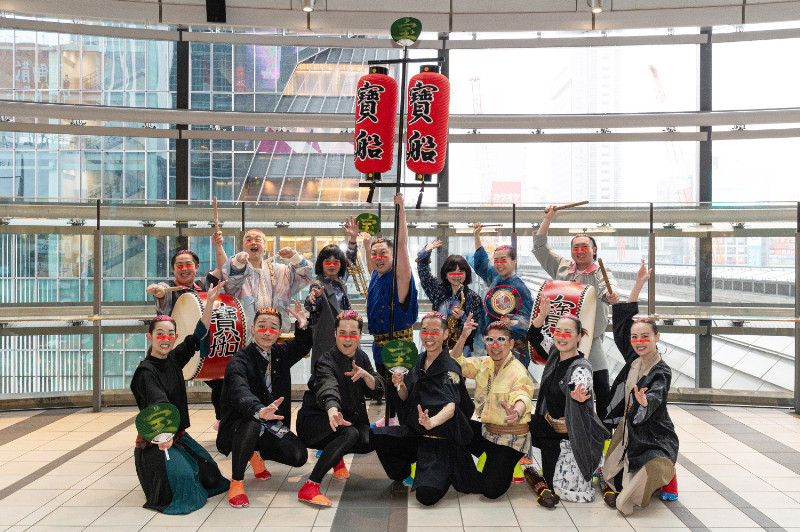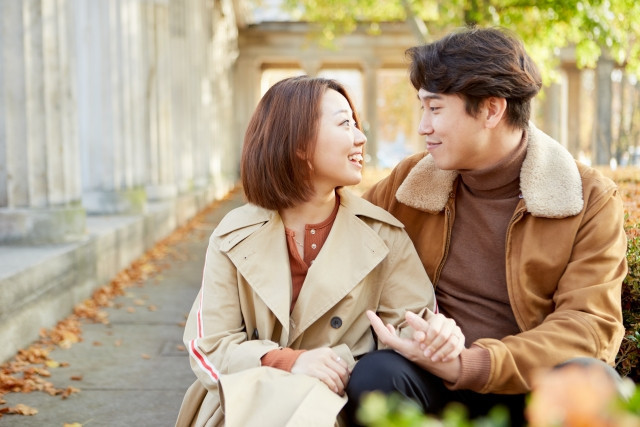Awa Odori (阿波踊り) is one of Japan’s most famous dances. Although it is a traditional art form with 400 years of history, as symbolised in the lyrics “Dancing fool, or watching fool. If we are all fools, why not dance?” the spirit of Awa Odori can still be seen in modern “party-p (パリピ)” culture.
Originally, the spirit of adopting the latest trends was called “Awa Odori-ism”.
So says Wataru Yonezawa (米澤渉) -san, the representative of Awa Odori group Takarabune (寶船). Yonezawa-san is the front runner in the Awa Odori world, having performed on stages in 21 countries around the world.


At first glance, the performances by Takarabune are very innovative and unconventional. For example, the SHIBUYA AWA DANCE RUNWAY, unveiled in spring 2023, is an event that combines a fashion show and Awa Odori. Dressed in high-end brands and dancing with and to the sound of trumpets, their appearance is far removed from the standard Awa Odori dance.
Takarabune reinterprets tradition and presents it to the world as state of the art culture. We asked them about the appeal of Awa Odori, which they describe as the “strongest culture (最強の文化 saikyou no bunka)”.


▲
SHIBUYA AWA DANCE RUNWAY, a collaborative performance with fashion brand HARE, took place in March 2023. The performance was presented in the form of a march through the corridors of Shibuya Hikarie, involving the general public visiting facilities who joined the line one after another, creating a frenzy that was hard to believe given the rainy weather.
Awa Odori = Detox !? The Appeal of Becoming a Dancing Fool
― I know you had many opportunities to MC on overseas stages. How do you explain the appeal of Awa Odori to people who don’t know about it?
I simply tell them, “it is the strongest culture in our opinion”. Another faster way is to have them actually dance it. Anyone, anytime, even if you don’t understand the language, can learn the dance in just 5 minutes; this is the greatest attraction of Awa Odori.
― I see. It is true that the experience of “everyone dancing the same dance” is a valuable experience in itself.
If I were to go into more detail, the 3 elements that Takarabune considered to be the appeal of Awadori are “Interactive (双方向性 souhoukou-sei) ”, “Diversity (多様性 tayou-sei)”, and “Nonverbal (非言語性 hi-gengou-sei)”.
Firstly, “Interactive”. We value dancing with our audience more than anything else.

The value of Awa Odori, which has been practised for more than 400 years are, “Dancing fool and watching fool. Both are fools so dance or lose (踊る阿呆に見る阿呆 同じ阿呆なら踊らにゃ損損 odoru aho ni miru aho onaji aho nara odornya son son)”. Born in an era when class systems were strict, Awa Odori is a culture of the masses where not much difference in upbringing or position could be felt between the dancers and the people watching them. Since we are all the same type of fools, it means we should enjoy it together without being shy.
For the common people in the past who had little sources of entertainment, the Awa Odori Festival was a major event that allowed them to release accumulated stress. It was a way of detoxifying the mind, clearing the head, and expelling the pent-up feelings from their bodies along with sweat and tears.

Even today, there aren’t many opportunities to act like a fool to the fullest. Especially since Corona, whenever I go around the world, I often feel that the audience is tired… But after dancing, they look so refreshed.
“Let’s dance! Let’s shout! Let’s sweat!” we call out to the audience to let the negative emotions stuck inside them be released, which is our mission as “dancing fools”.
― When you say “Interactive”, do you, as Takarabune, also receive something from the audience?
Yes we do. I, personally, love the feeling of the moment when peoples’ hearts become one.
We started to hold live broadcasts and online workshops during the Corona pandemic, but the more we did it, the more we felt “I want to dance at the actual place”. After all, there is no substitute for the feelings of physically sharing the same space and coming into physical contact with each other. I think it was 3 years of being exposed to what our instincts really wanted.

― What about the second - “Diversity”?
First of all, it means that everyone can dance. The Awa Odori Festival is attended by everyone, from children to the elderly, so the choreography is very simple so that everyone can join in.
Besides, “cultural diversity” is another appeal of Awa Odori. The Awa Odori of old was truly free and messy, it was chaotic in a good way. Dancing with and to the sound of violins, incorporating the latest fashion, as long as it’s fun anything goes. Originally, the spirit of adopting the latest trends was called “Awa Odori-ism”.
Today, mainstream Awa Odori has established “this is how you dance” rules on how how to dance, with different choreographies for men’s dance (男踊り otoko odori) and women’s dance (女踊り onna odori). But this is a relatively new culture that emerged in the 1960s, after Awa Odori was adapted to be more tourist-friendly. As for Takarabune, we do not stick to the mainstream style, but challenge the new possibilities of traditional performing arts by mixing it with other cultures.
― Not distinguishing choreography based on gender is also linked to “Gender Diversity” I see. And the third is “Nonverbal”.
The choreography of Awa Odori is very simple, so even if you don’t speak the same language, people will understand if you show them the movements.
The day after performing in an English-speaking country, the next day dancing in a French-speaking country. From an Italian-speaking country, you can go to a Portuguese-speaking country. I am proud as a performer to be able to show the same art all over the world in this way.

「NEO Awa Odori」that Connects Traditional Arts to the Future
― Are any of the members of Takarabune from overseas?
We have a Spanish member who is very active at the moment. In the past, we had a boy from France who joined us while he was studying abroad, and we have children from Belgium and Canada. One boy told me, “I had an image of Japanese traditional culture being quiet and strict, but there are groups like this that are so energetic and high spirited (laughs)”.
― What are some of the most memorable moments from your activities abroad so far?
I remember performing in a country where there was an ongoing civil war due to religious conflict. I danced in various places whose dominant religion was different, but wherever I went, I was welcomed with open arms. People with different ideologies dancing the same dance, smiling the same way, I was really moved by that scene.
I think that because there are words, arguments are born, and because of that conflicts can become radicalised. At times like that, it would be good to have a fool who could say, “Let’s all forget about words for a moment and dance”. If we can contribute to peace even a little by doing so, I will feel very happy.
― What kind of future do you envisage for yourself as a link to the traditional arts?
We call ourselves the “NEO Awa Odori Group” because we want to connect the history of Awa Odori to the future.
Awa Odori is, so to speak, a traditional party people dance. Its spirit has been passed on to club culture, Shibuya Halloween, and other contemporary youth cultures. Awa Odori is now classified as a traditional culture, but in the past it was banned because it disturbed public morals.
Our role is to make Awa Odori a popular culture, so that people say not only “Awa Odori is cool because it is traditional”, but also “Awa Odori is at the forefront of trends”. To achieve this, we will continue to challenge the possibilities of traditional arts.
Collaboration with : Takarabune
































